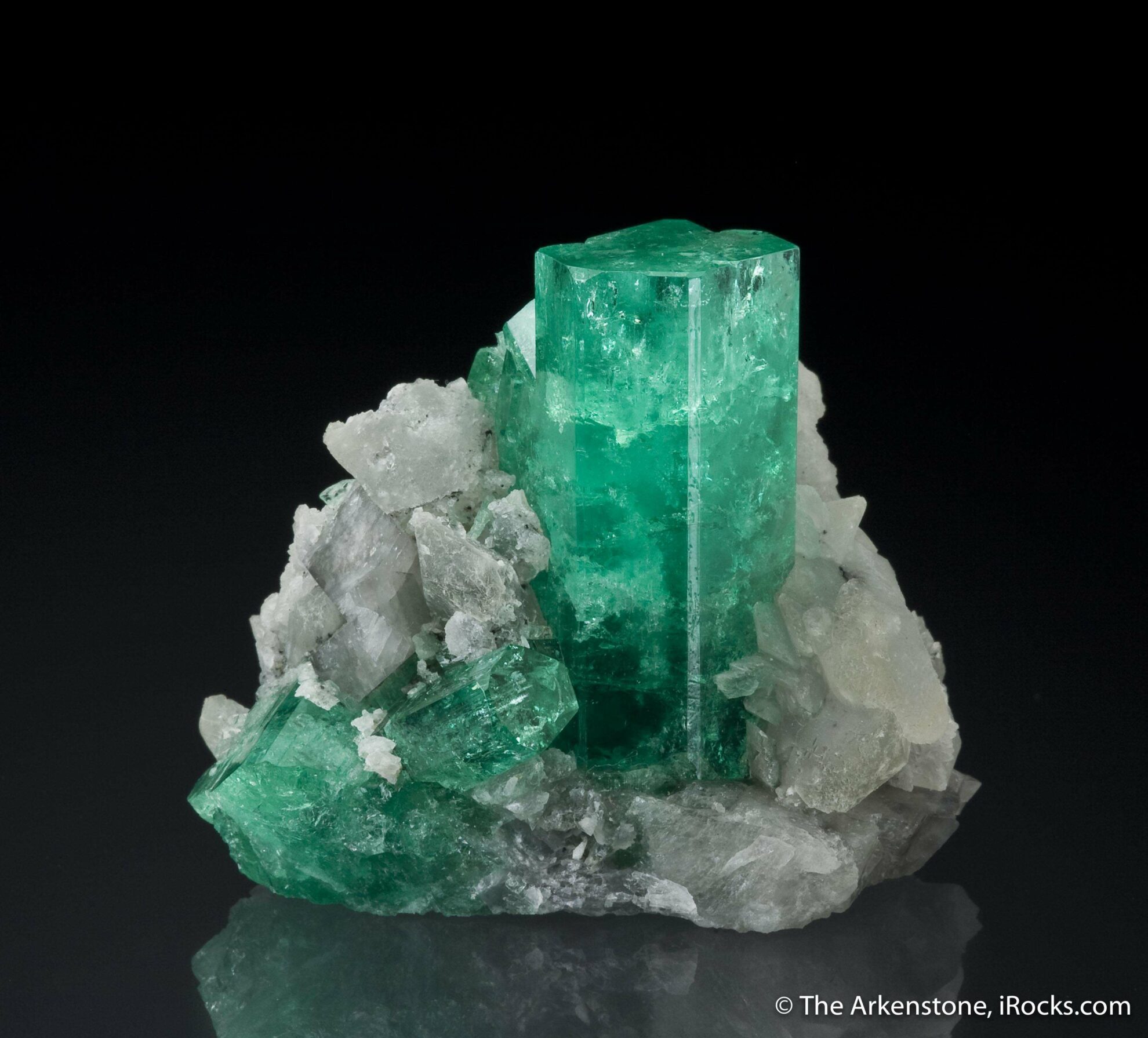A World of Crystals
We live in a world of crystals. Learn what they are and where you can find them, from deep underground to the dust in the air and even inside our bodies.
3 Minute Read
What are Crystals?
Gemologists define a crystal as a solid with its atoms arranged in "highly ordered" repeating patterns. Crystals can form in one of seven patterns known as crystal systems. Along with chemical composition, crystal systems define and distinguish mineral species.
For example, spinel has a chemical formula of MgAl2O4 - one atom of magnesium to two atoms of aluminum and four atoms of oxygen. It also has an isometric crystal system. That means its crystals have axes of equal sides that intersect at 90° angles. (This system is also known as the cubic system).
Interested in this topic?
This article is also a part of our Mineralogy Certification Course, in the unit Introduction To Mineralogy.
The rocks that make up the planets in our solar system, including our own, consist of minerals. Composed of various elements, these minerals occur naturally in crystal form.
Sometimes the rocks themselves have crystalline structures, too. However, rocks more commonly have polycrystalline structures. That means they're made of aggregated materials that contain tiny crystallite grains.
What are Gemstones?
Many people probably visualize gemstones when they think of crystals. Indeed, gemstones make up some of the best-known examples of crystals.
What is a gemstone? The simplest definition is any mineral chosen for its durability and beauty and then cut and polished for adornment. Gem cutters or lapidaries can tumble, cab, facet, or carve gems.
However, some popular gemstones aren't crystals or even minerals. For example, amber forms from hardened tree sap from prehistoric trees. These pieces sometimes famously contain inclusions of insects and other creatures.
Over many millions of years, gems form deep in the earth from minerals subjected to extreme temperature and pressure conditions as well as other forces. Of course, people have dug mines to reach gemstones, such as emeralds, rubies, and sapphires.
Gems sometimes reach the surface in other ways. When volcanoes erupt, they can bring up diamonds that form miles beneath the Earth's surface. Surface erosion sometimes exposes gemstones, too.
The IGS gem listings contain information on hundreds of gemstones, from the very common to the extremely rare. Most (but not all) are crystals.
Crystals Closer to Home
Crystal particles also make up our mountains and form the ocean floor. However, you don't have to search far and wide to find crystals. When you walk across sand, you're walking on crystalline particles. Did you ever wonder where black sand comes from? Try to pick it up with a magnet. It will stick to the magnet because it contains the mineral magnetite, an iron ore.
Our homes, too, consist of crystalline and polycrystalline materials, like natural rock. Even artificial materials, like cement, get their strength from the growth of crystal particles.
Rocks, pebbles, and sand are all formed from eroded crystals. Like the rock they come from, these particles stay in the same crystal form even as they get smaller and smaller. Even airborne dust contains minuscule particles of quartz crystals.
Crystals in Living Things
The world of crystals even extends into living things. Kidney stones plague many creatures. Those found in dogs, cats, horses, and people may contain struvite, a naturally occurring crystal.
Ever wonder why a pearl gleams in the sunlight? Sometimes, a tiny foreign object gets caught in a mollusk's insides. The creature then secretes a fluid around the irritant. Like a scab on a skinned knee, this secretion protects against infection. This fluid, however, contains a crystalline mineral called aragonite. Over many years, the layers upon layers these tiny crystals form around the particle become what we know as a pearl. This layering of aragonite gives the pearl the sheen or orient that everyone loves.
Crystals even form part of our bones and teeth. Hydroxylapatite, a variety of the crystalline mineral apatite, constitutes a principal part of our enamel and bones.
Crystals abound all around us. From mountains to bones, from diamonds to dust, our world of crystals is vast and exciting.
International Gem Society
Related Articles
Precision Faceting a Story Gemstone: Custom Faceting Advice
How to Estimate Gem Weight in a Jewelry Setting
Jewelry Nomenclature: Gem Bracelets and Necklaces
How Do Spinels Form?
Latest Articles
Opal Buying Guide
Amethyst Sources Around the World: The Geological Story Behind These Purple Gemstones
Brazilianite Value, Price, and Jewelry Information
Ruby-Glass Composites vs Leaded Glass Clarity Enhancements
Never Stop Learning
When you join the IGS community, you get trusted diamond & gemstone information when you need it.
Get Gemology Insights
Get started with the International Gem Society’s free guide to gemstone identification. Join our weekly newsletter & get a free copy of the Gem ID Checklist!
